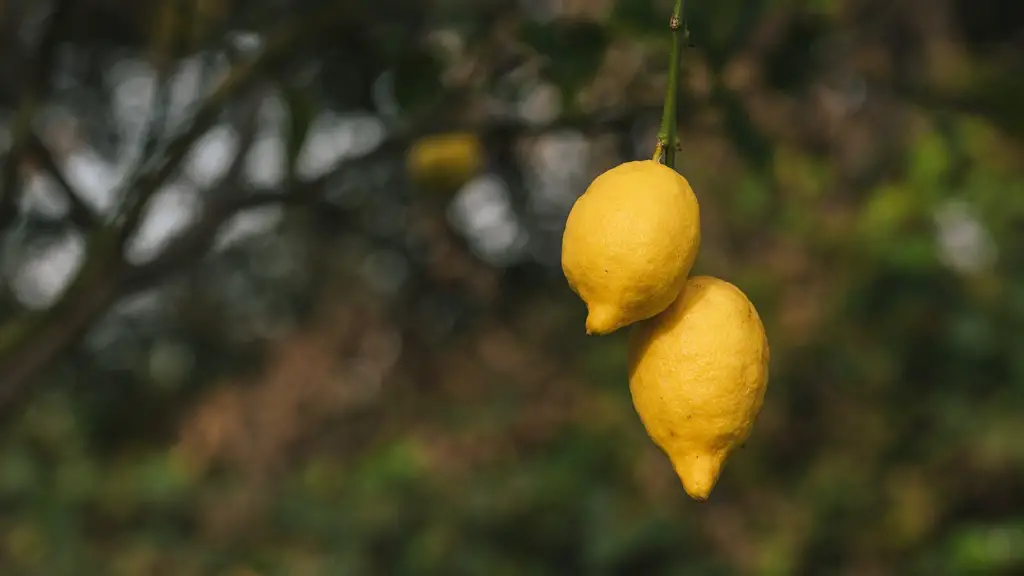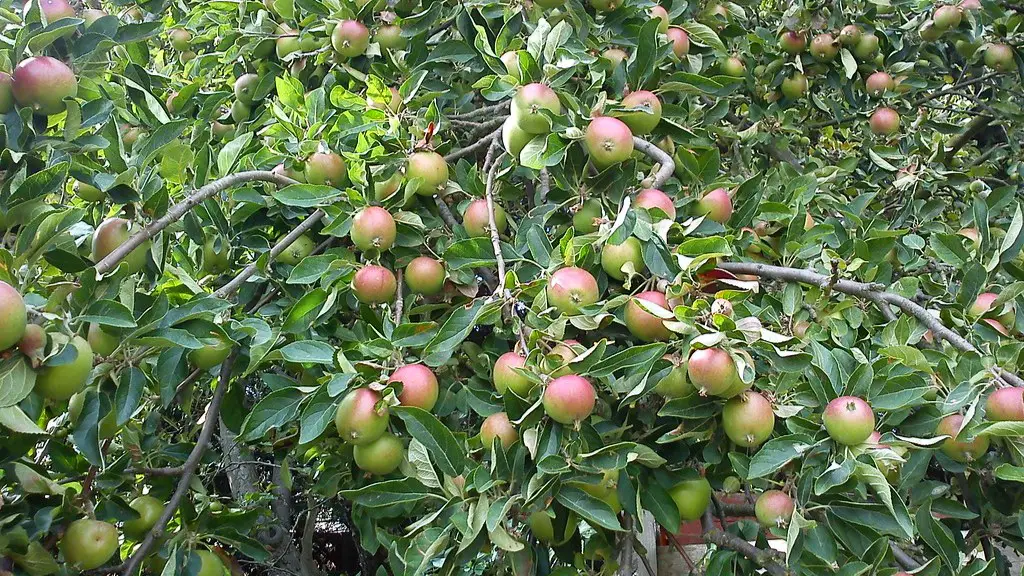Learning how to grow a lemon tree from a fresh seed is a rewarding experience. It requires patience, knowledge of proper care, and routine maintenance to achieve success. Here are the steps to take in order to start your own lemon tree.
First, you need to select a good quality seed. You can find lemon seeds online, or in local stores. You should look for seeds that are dark in color and plump. Avoid those that are discolored, shriveled, or too large.
Second, you need to prepare a pot that is at least 8 inches deep. Fill it with a potting mix with good water retention capabilities that also has good drainage. Place one seed in the center of the pot and lightly cover with soil before adding a layer of mulch.
Third, you will need to place the pot in a sunny area and water it once a day in the early morning. Make sure that the soil remains moist, but not overly wet. If the soil is too dry, add some extra water to moisten it.
Fourth, keep an eye out for seedlings that may start growing in the pot. As soon as they appear, move the pot to a brighter location and continue to water it daily. Also, make sure to provide the lemon tree with fertilizer every two weeks to ensure healthy growth.
Fifth, you need to be aware of pests or diseases that may attack your lemon tree. If you spot any, you need to take quick action to prevent them from spreading. Use a suitable insecticide or fungicide to eradicate them.
Sixth, you should also prune the tree to maintain its shape. Cut off any dead or diseased branches and shape the tree as you like. This will help keep it healthy and productive.
Lastly, you should remember to harvest the lemons once they have ripened. This can be done by gently twisting them off the tree. Enjoy your very own homegrown lemons!
Varieties of Lemon
There are numerous varieties of lemon trees, each with distinct characteristics. The most common varieties are Meyer lemon, Eureka lemon, and Lisbon lemon. Meyer lemons are a sweet and juicy variety that is known for its abundance of juice and intense flavor. Eureka lemons are tart and acidic, making them perfect for cooking or juicing. Lastly, Lisbon lemons are a large-sized variety with a thick rind, perfect for baking.
Despite the many differences between the varieties, all of them need to be grown and cared for in the same way. All lemon varieties need to be placed in a sunny location and watered regularly. Fertilizer must also be provided every two weeks to ensure healthy growth.
It is important to also understand the climate and soil conditions best suited for growing lemons. Most of the time, lemons require full sun and well-draining soil. pH levels in the soil should be between 5.5 to 7.0, and the ideal temperature range is between 15 the 25 degrees Celsius.
Pest and Disease Control
Like any other plant, lemon trees are also prone to pests and diseases. Common pests include aphids, mealybugs, and scale insects. These pests can cause damage to the leaves and leave a sticky substance that attracts ants and other insects. The best way to get rid of these pests is to use an insecticidal soap.
Diseases are also a big problem for lemon trees. Common diseases include citrus canker, citrus scab, and citrus leaf miner. Citrus canker affects the fruit and leaves and can be identified by its sunken or spotted lesions. Citrus scab affects leaves, fruit, and flowers, causing them to be rough and scabbed. Lastly, citrus leaf miner is a larva that bores into the leaves, creating tunnels and weakening them.
The best way to prevent such diseases and pests from affecting your lemon tree is to provide good plant hygiene and proper care. Make sure to prune your tree regularly, remove any damaged or dead branches, and water your lemon tree once a day in the morning.
Harvesting and Storage
When it comes time to harvest the lemons, you can simply twist them off the tree. Make sure to pick them when they are ripe and yellow, as they will have the most flavor. Once harvested, the lemons can be stored in a cool, dry place for a few days.
You can also preserve the lemons by making lemon juice, zest, or jam. To preserve the juice, you can freeze it in ice cube trays, or you can can the juice in jars. To preserve the zest, simply dry it in a low oven or in the spice rack of your pantry. Lastly, you can use the lemons to make homemade jam or marmalade that can be stored in the fridge for months.
Potting and Repotting
In order for your lemon tree to thrive, you need to repot it every two years or so. This will ensure that the tree gets enough room to grow and also allow for adequate drainage. When repotting, use a good quality potting mix, such as one with a mix of sandy and loamy soil.
You should also be aware of signs that suggest the need for repotting. If the roots of your lemon tree are visible in the pot, or the soil is no longer moist, it is likely time to repot. The process is simple and only requires you to remove the existing soil, fill up the pot with fresh potting mix, and put the tree back in the pot.
Once the tree is repotted, make sure to provide good care and maintenance. Water the tree daily in the morning, feed it with fertilizer every two weeks, and prune regularly to maintain the shape of the tree.
Conclusion
Growing a lemon tree from a fresh seed requires patience, knowledge, and a routine maintenance plan. By following the steps outlined in this post and providing your tree with adequate care, you can achieve success. Enjoy your own homegrown lemons in no time!




